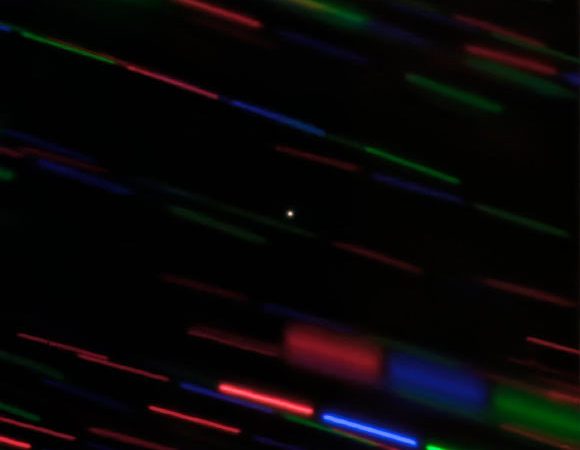In a new paper published in the Astronomical Journal, astronomers from the United States, Canada and Europe provide a detailed characterization of the physical properties and orbital evolution of the asteroid 2020 CD3 — Earth’s second discovered temporary natural satellite, or minimoon. Their results prove that 2020 CD3 is a natural body and not some relic piece of human-made space junk.
Source: Sci News
Asteroids and comets can be temporarily captured by planets as natural satellites. Theoretical models predict that the Earth is also surrounded by a cloud of such temporarily captured asteroids, colloquially called minimoons.
Minimoons possess a number of attributes which make them objects of particular interest.
As they spend an extended amount of time in the vicinity of the Earth, they can provide several windows of opportunity to obtain observations of the little studied population of meter-class asteroids.
Due to their relatively long capture duration, accessibility, and small size, minimoons are viable targets for taking the first practical steps in the emerging field of asteroid resource utilization.
Until 2020, only one minimoon had been discovered — 2006 RH120, a tiny near-Earth asteroid with a diameter of approximately 2-3 m (6.6-9.8 feet).
The second known minimoon, 2020 CD3, was discovered on February 15, 2020 by the Catalina Sky Survey 1.5-m telescope on Mt. Lemmon.
One day later, an alert automatically sent out by NASA’s Scout system announced that it was likely temporarily captured in the Earth-Moon system.
Discovering an object on a geocentric orbit always raises suspicion of an artificial origin, but during the 2.5 weeks following its discovery 2020 CD3 could not be linked to any known artificial object nor could a natural origin be ruled out.
On February 26, 2020, the Minor Planet Center therefore added 2020 CD3 to the catalogue of asteroids as a temporarily-captured object with a request for further follow-up observations to establish its nature.
“The discovery in February was significant as the only other minimoon astronomers have documented was recorded back in 2006, spending around a year on an orbit around the Earth,” said Dr. Grigori Fedorets, an astronomer at Queen’s University Belfast.
“We could not miss such a rare opportunity!”
To characterize the potential minimoon, Dr. Fedorets and colleagues obtained high-precision astrometric follow-up observations in February-May 2020 with the Lowell Discovery Telescope (LDT) and several other ground-based observatories.
By measuring 2020 CD3’s changing brightness over time with the Large Monolithic Imager (LMI) on the LDT, they established its rotation rate to be about 3 min.
“The rotation rate was probably the largest unanswered question of this research,” Dr. Fedorets said.
“Our team showed that it rotates slower than anticipated for objects of this size range.”
The researchers also used the LMI/LDT combination to precisely measure 2020 CD3’s position to refine its orbit.
This information, combined with the minimoon’s physical characteristics — such as an inferred silicate composition — indicate this is certainly a natural object.
This distinguishes it from another recently-discovered minimoon, 2020 SO, which astronomers believe may be the Centaur upper stage rocket booster that helped lift NASA’s Surveyor 2 spacecraft toward the Moon in 1966.
Dr. Fedorets and co-authors also found that 2020 CD3 is between 1 and 1.5 m (3.3-4.9 feet) in diameter and that it came within about 13,000 km (8,100 miles) of Earth at closest approach.
“This object wasn’t bright enough to study for very long,” said Dr. Nick Moskovitz, an astronomer at Lowell Observatory.
“The fact that we have this telescope in our backyard and were able to rapidly respond really made a difference.”
“Minimoons are expected to be discovered in high numbers in the following decade, with the opening of the Vera C. Rubin Observatory expected in 2023,” Dr. Fedorets said.
Source: Sci News

































Leave a Comment
You must be logged in to post a comment.